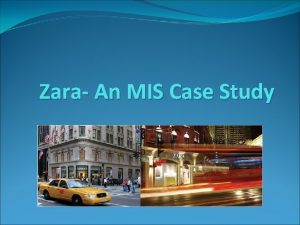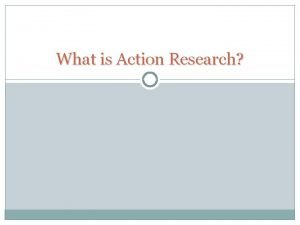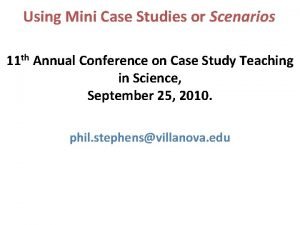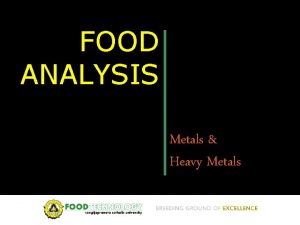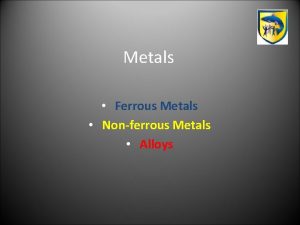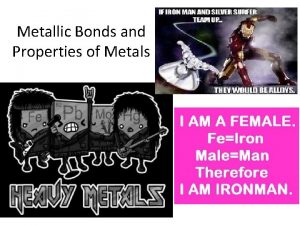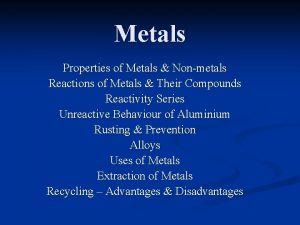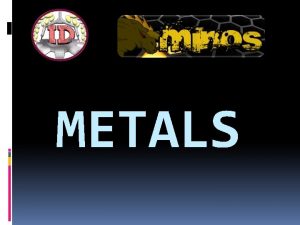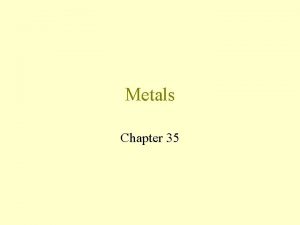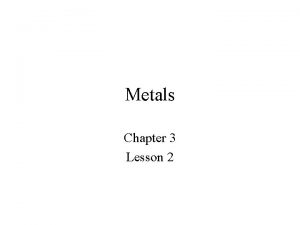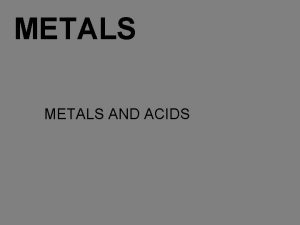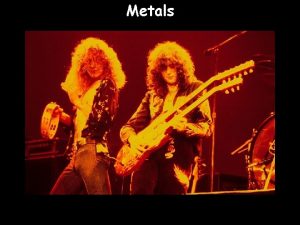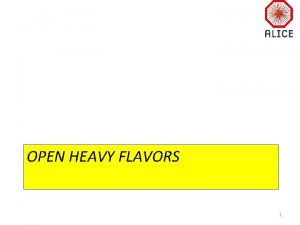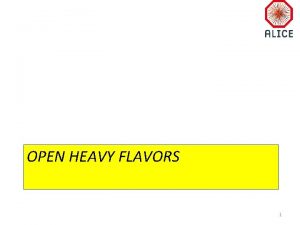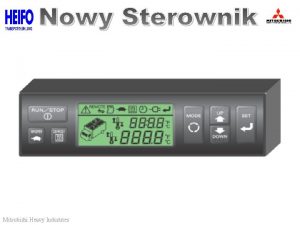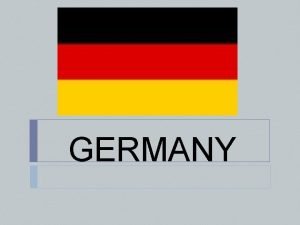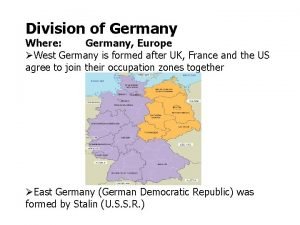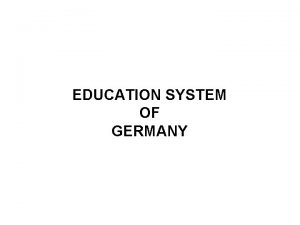Nationalscale case study on heavy metals Germany I
























- Slides: 24

National-scale case study on heavy metals (Germany) I. Ilyin, O. Travnikov (MSC-E), S. Feigenspan, G. Schütze (UBA)

Objectives and expected results Objective: Evaluation of heavy metal (Pb, Cd, Hg) pollution on a country scale involving variety of national data HM deposition (2016) Pb Research program: Cd • Detailed assessment of Hg, Pb and Cd pollution in Germany in 2014 -2016 Hg • Evaluation of modelling results vs. EMEP and national measurements • Evaluation of the revised national emissions inventory • Recommendations for improvement of HM pollution assessment on both national and EMEP regional scales The project is jointly funded by EMEP and the country (UBA, Germany) 21 st TFMM, May 2020

EMEP and national monitoring data Pb, Cd Air concentrations Wet deposition (Pb, Cd) Hg Wet deposition (Hg) EMEP stations Ø Most reliable data were selected (in cooperation with national experts) Ø Good spatial coverage for Cd and Pb (about 100 stations) Ø Hg wet deposition mostly in the northern part of the country 21 st TFMM, May 2020

Evaluation of modelling results against measurements Modelled vs. observed air concentrations (mean 2014 -2016) Pb Cd Hg Modelled vs. observed wet deposition (mean 2014 -2016) Pb EMEP stations Cd Hg National stations Ø Reasonable agreement for the EMEP stations 21 st TFMM, May 2020

Modelled vs. observed wet deposition (EMEP stations) Hg wet deposition flux, 2015 (2014 -2016) Observed Global Germany EMEP Natural/secondary Ø Significant contribution of global sources and transboundary transport Ø Seasonality: max in summer, min in winter 21 st TFMM, May 2020

Modelled vs. observed concentrations in air (EMEP stations) Pb air concentrations, 2015 (2014 -2016) 2 3 5 8 12 20 ng/m 3 Observed Global Germany EMEP Natural/secondary Ø Significant contribution of national emission sources and re-suspension Ø Distinct seasonality: max in winter, min in summer (opposite to Hg) 21 st TFMM, May 2020

Modelling results vs. national observations Relative bias (wet deposition) Pb Cd Hg Relative bias (air concentration) Pb Cd Relative bias: < -50% - 100% > 100% Ø Reasonable agreement for the most (60 -75%) of non-EMEP stations 21 st TFMM, May 2020

Modelled vs. observed concentrations in air (non-EMEP stations) Comparison of modelled and observed Pb concentrations in air (2014 -2016) Observed Germany EMEP Global Natural/secondary 2 3 5 8 12 20 ng/m 3 21 st TFMM, May 2020

Modelled vs. observed wet deposition fluxes (non-EMEP stations) Comparison of modelled and observed Hg wet deposition (2014 -2016) Relative bias: < -50% - 100% Observed Global Germany EMEP Natural/secondary > 100% 21 st TFMM, May 2020

Modelling results vs. national observations Relative bias (wet deposition) Pb Cd Hg Relative bias (air concentration) Pb Cd Relative bias: < -50% - 100% > 100% Ø There are stations with over- or underestimation of the observed levels 21 st TFMM, May 2020

Analysis of discrepancies: differences between provinces Mean relative bias, % (Pb wet deposition) Lower Saxony Thuringia < -50% - 100% Lower Saxony Thuringia > 100% Ø Difference between observed levels of wet deposition in two provinces 21 st TFMM, May 2020

Analysis of discrepancies: overestimation of Pb and Cd air concentrations (2014 -2016) Pb (North Rhine-Westphalia) (Hesse) Cd Observed Global Germany EMEP Natural/secondary 21 st TFMM, May 2020

Analysis of emission data Pb anthropogenic emissions (2015) EMEP emissions (50 x 50 km 2, submission 2017) 0. 05 0. 15 0. 5 New German emissions (0. 1°x 0. 1°, used in the case study) 2 5 15 kg/km 2/y 21 st TFMM, May 2020

Modelling with ‘old’ and new emissions: comparison with measurements Pb concentrations in air (0. 1°x 0. 1°) Modelled (50 x 50 km 2) Modelled (0. 1°x 0. 1°) DEHB 005 Observed DEST 075 DERP 022 DESN 051 Baden-Wuerttemberg province DESN 074 DEBY 006 2 3 5 8 12 20 ng/m 3 Ø Marked improvement of modelling results at a number of stations and provinces 21 st TFMM, May 2020

Modelling with ‘old’ and new emissions: comparison with measurements Pb concentrations in air (0. 1°x 0. 1°) North Rhine-Westphalia province Hesse province Modelled (50 x 50 km 2) Modelled (0. 1°x 0. 1°) Observed 2 3 5 8 12 20 ng/m 3 Ø Discrepancies between modelled and observed levels remain in North Rhine. Westphalia and Hesse st 21 TFMM, May 2020

Modelled deposition vs. concentrations in mosses North Rhine-Westphalia: high deposition, moderate Cmoss g/km 2/y Pb total deposition (2015) Pb in mosses (survey-2015) 21 st TFMM, May 2020

Modelled deposition vs. concentrations in mosses W. Poland: high deposition and high Cmoss g/km 2/y Pb total deposition (2015) Pb in mosses (survey-2015) 21 st TFMM, May 2020

Analysis of modelling results in North Rhine-Westphalia and Hesse provinces 3 -year mean concentrations of Pb in air Observed Germany Other sources Ø German emission sources is main contributor to air concentrations in HE and NW 21 st TFMM, May 2020

Development of emission scenarios Purpose: Study of the model sensitivity to changes of emissions in provinces Main steps: 1. Reduction of emission in North Rhine-Westphalia (#1) or Hesse (#2) 2. Re-calculation of wind re-suspension in response to declined deposition 3. Verification of modelled concentrations in these and neighbouring provinces Original emission (Pb, 2015) Scenario #1 2. 7 -fold reduction g/km 2/y 21 st TFMM, May 2020

Development of emission scenarios Purpose: Study of the model sensitivity to changes of emissions in provinces Main steps: 1. Reduction of emission in North Rhine-Westphalia (#1) or Hesse (#2) 2. Re-calculation of wind re-suspension in response to declined deposition 3. Verification of modelled concentrations in these and neighbouring provinces Original emission (Pb, 2015) Scenario #2 4 -fold reduction g/km 2/y 21 st TFMM, May 2020

3 -year mean concentrations of Pb in air in North Rhine-Westphalia and Hesse provinces: application of emission scenarios Original emission Observed Rel. Bias = 77% Modelled (original emissions) Rel. Bias = 94% 21 st TFMM, May 2020

3 -year mean concentrations of Pb in air in North Rhine-Westphalia and Hesse provinces: application of emission scenarios Scenario #2: Emission/4 Scenario #1: Emission/2. 7 Observed Modelled (scenario) Rel. Bias = -3% Rel. Bias = 1% Ø Similar results obtained for Cd air concentrations Ø Some improvements in neighbouring provinces 21 st TFMM, May 2020

Conclusions • Fine resolution modelling on a country scale provides detailed patterns of heavy metal pollution and reasonably reproduces background EMEP measurements • The national monitoring network significantly improves coverage of heavy metal observational data in the country and provides additional information for evaluation of the modelling results. • Some measurement sites do not reflect background pollution levels (e. g. affected by local pollution) • Refined national emissions inventory for heavy metals favored general improvement of the model assessment and leads to better agreement with observations. • The modelling results based on emission scenarios indicate possible overestimation of emissions in some provinces of the country (North Rhine. Westphalia and Hesse) 21 st TFMM, May 2020

 Nationalism case study italy and germany
Nationalism case study italy and germany Shratey
Shratey Non metals in the periodic table
Non metals in the periodic table Ferrous material
Ferrous material Physical properties of metals
Physical properties of metals Natural science grade 7 term 2 matter and materials
Natural science grade 7 term 2 matter and materials Natural science grade 7 term 2 notes
Natural science grade 7 term 2 notes Example of metals
Example of metals Best worst and average case
Best worst and average case Fbi virtual case file case study
Fbi virtual case file case study Long case vs short case
Long case vs short case Average case complexity of binary search
Average case complexity of binary search Glennan building cwru
Glennan building cwru Bubble sort algorithm pseudocode
Bubble sort algorithm pseudocode Bubble sort best case and worst case
Bubble sort best case and worst case Bubble sort best case and worst case
Bubble sort best case and worst case Law of sines ambiguous case
Law of sines ambiguous case Zara mis
Zara mis Yelp elite benefits
Yelp elite benefits Kf case study
Kf case study Beth anders
Beth anders Action research vs case study
Action research vs case study Volkswagen of america: managing it priorities
Volkswagen of america: managing it priorities Plant and machinery valuation report sample
Plant and machinery valuation report sample Mini case study examples
Mini case study examples

















